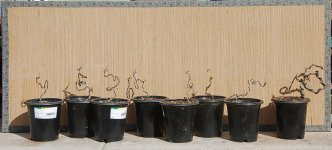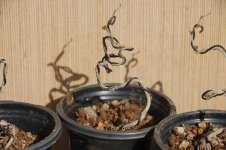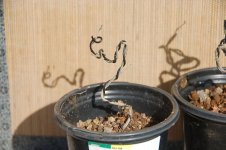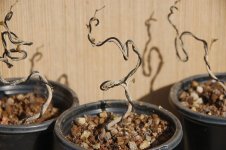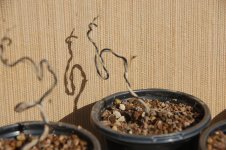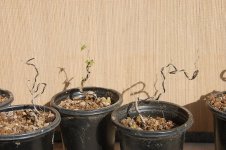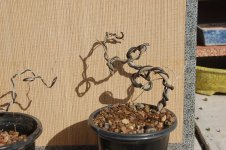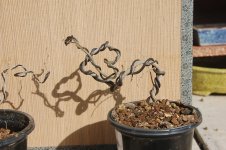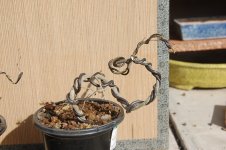Smoke
Ignore-Amus
So as previously mentioned I found several clay pots under my benches that had been placed in the drip line of larger trees. This was due to the fact that last year I built a completely new watering system on my benches. This particular pot contained Korean hornbeams. I removed them from the pot a separated each tree. I cut the roots back and stored them in water till completed with project. Each tree was wired and thrown back in the bucket. Then each tree was removed and bent into it's new shape. Some were really contorted and some were left a little taller for literati style. The really large on I found out was due to its root escaping the container and plunging deep into the raised bed planter it was in for half of last summer. Judge for your self how much difference in size growing in the ground and pot culture can make on growing out seedlings. The last three photo's are the larger plant. Look at the difference in the group shot!!
